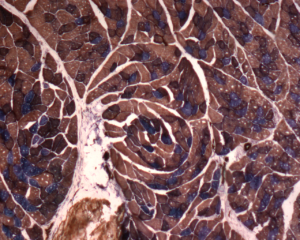Metabolism

Glycolysis produces little ATP, but is faster.
Respiration produces a lot of ATP, but also takes longer.
These two different strategies are used by various cells.
Glycolysis, for example by tumor cells (Warburg effect) or fast-twitch muscle fibers. No oxygen is necessary for this.

Figure: Different fibre types within the musculature (Ziegan staining: slow Type I – blue; fast Type II – brown).
References:
Dwivedi S, Glock C, Germerodt S, Stark H & Schuster S (2023) Game-theoretical description of the go-or-grow dichotomy in tumor development for various settings and parameter constellations. Scientific reports, 13(1), 16758. DOI:10.1038/s41598-023-43199-3 / EISSN:2045-2322
Barth E, Sieber P, Stark H & Schuster S (2020) Robustness during Aging—Molecular Biological and Physiological Aspects. Cells 9 (8): 1862. DOI:10.3390/cells9081862 / EISSN:2073-4409
Schuster S, Boley D, Möller P, Stark H, Kaleta C (2015) Review: Mathematical models for explaining the Warburg effect: a review focussed on ATP and biomass production. Biochemical Society Transactions 43 (6): 1187-1194. DOI:10.1042/BST20150153 / ISSN:0300-5127
Stark H, Fichtner M, König R, Lorkowski S, Schuster S (2015) Review: Causes of upregulation of glycolysis in lymphocytes upon stimulation. A comparison with other cell types. Biochimie 118: 185–194. DOI:10.1016/j.biochi.2015.09.017 / ISSN:0300-9084